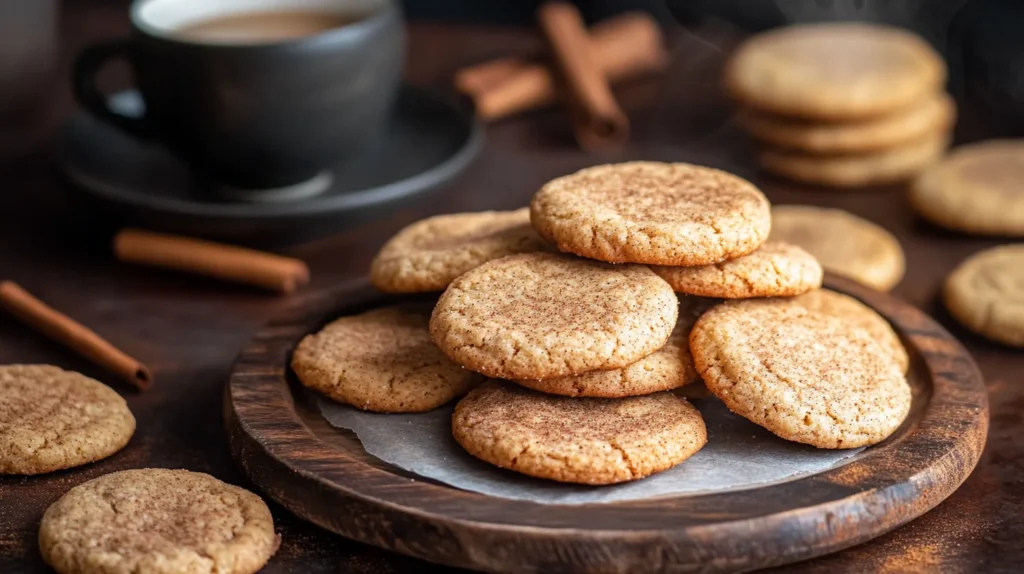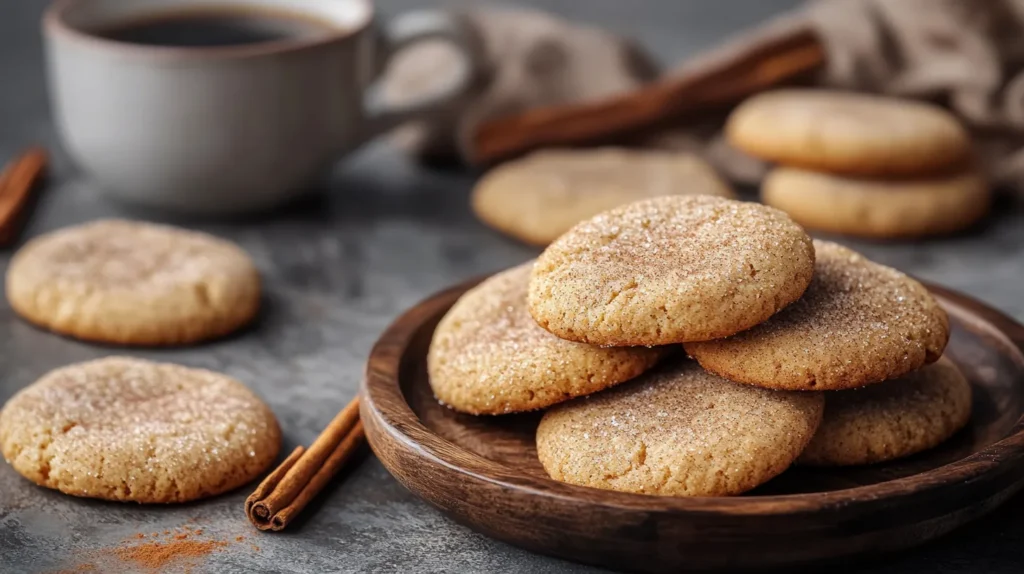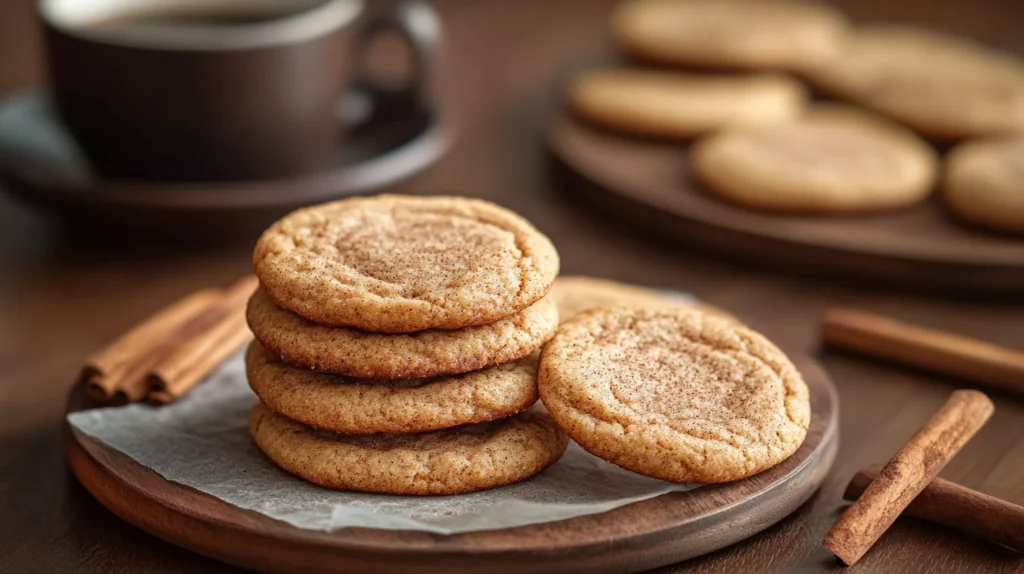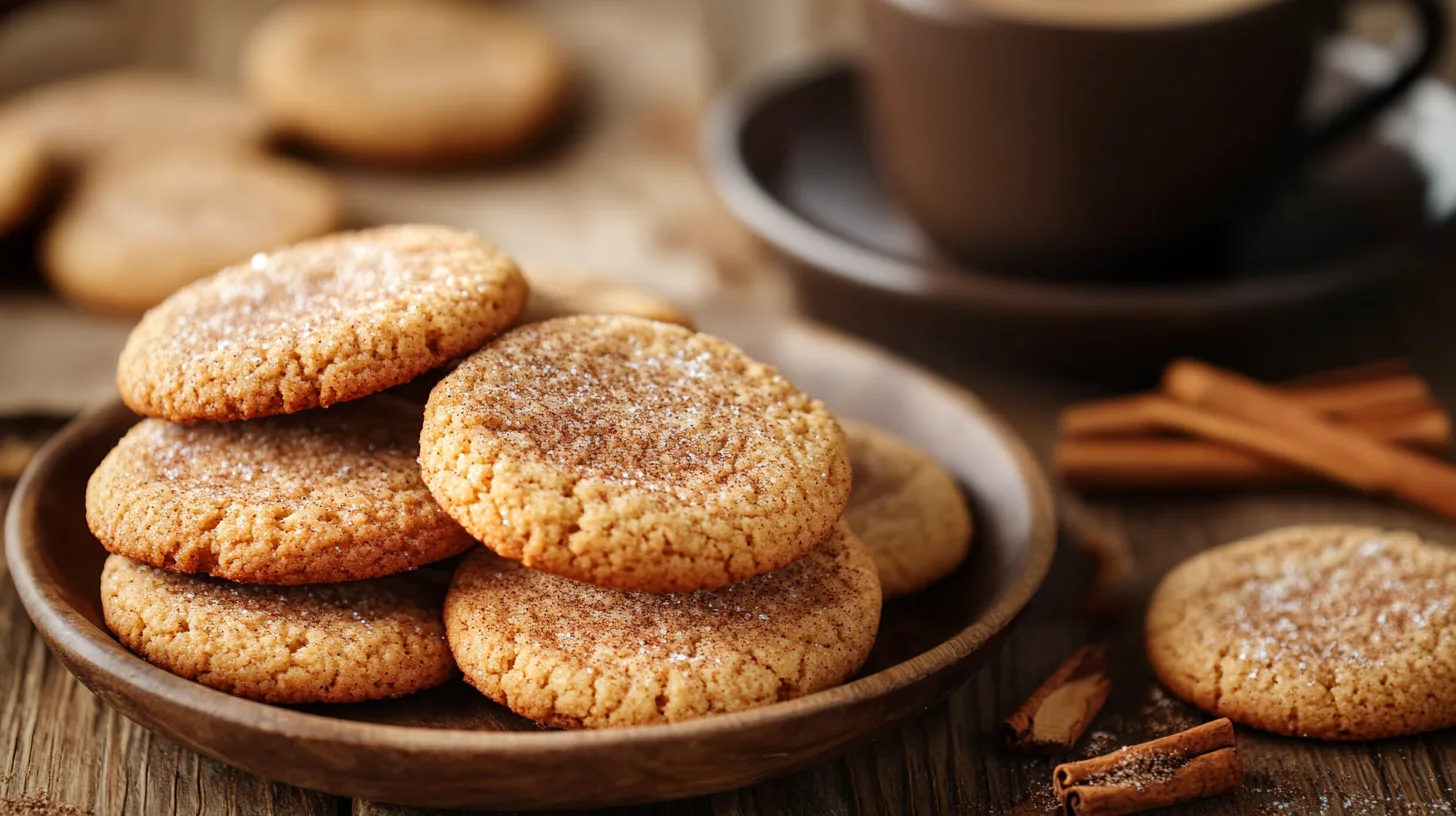Baking Perfect Cinnamon Cookies – Discover the Joy of Homemade Treats
When it comes to baking, few things can compare to the delightful experience of whipping up a batch of fresh cookies. Today, we’re diving deep into the ever-popular Cinnamon Cookie Recipe that is sure to bring warmth and comfort to your kitchen. Whether you’re an experienced baker or just starting out, this guide will provide you with everything you need to know about creating the perfect cinnamon cookie, from its rich history to step-by-step baking instructions, troubleshooting tips, and creative variations. Let’s embark on this delicious journey together!
Introduction to Cinnamon Cookies
Cinnamon cookies have long held a cherished place in the hearts and homes of many. Their delightful aroma wafts through kitchens, evoking feelings of nostalgia and warmth. But beyond their comforting scent lies a fascinating history, a versatile nature, and a simple approach to baking that makes them a favorite among cookie lovers.
The origins of cinnamon spice can be traced back thousands of years. Harvested from the inner bark of trees, cinnamon was once considered more precious than gold and used for various purposes, including medicine and preservation. As cultures evolved and trade routes expanded, cinnamon found its way into countless recipes, including cookies. Over time, the humble cinnamon cookie emerged, adapting to regional flavors and preferences.
Today, these cookies are synonymous with celebration, warmth, and love. They’re not only perfect for holiday gatherings but also make great gifts or everyday treats. Plus, the ingredients are often staples found in most pantries, making cinnamon cookies a cost-effective and accessible option for bakers of all levels.
A Brief History of Cinnamon Cookies
The story of cinnamon cookies is closely tied to the history of cinnamon itself. This beloved spice has been cultivated since ancient times, first appearing in Egyptian tombs as a prized possession. The use of cinnamon in sweet baked goods traces back to medieval Europe, where the spice began to be incorporated into cakes and cookies.
As recipes traveled across borders and continents, they took on new forms and flavors. In America, the classic cinnamon cookie recipe began to gain popularity in the 19th century, particularly during the holiday season. Regional variations emerged, with some areas favoring chewy, soft cookies while others opted for crisp varieties. Today, the cinnamon cookie has evolved into numerous interpretations, each adding unique twists and innovations to the original concept.
Why Cinnamon Cookies are a Classic Treat
One of the most compelling reasons why cinnamon cookies remain a beloved treat is the comforting aroma and flavor they emit while baking. The warm, spicy notes of cinnamon combined with the sweetness of sugar create an irresistibly inviting ambiance that draws people to the kitchen.
Versatility is another hallmark of cinnamon cookies. They adapt beautifully to various occasions, from festive holidays like Christmas to casual family gatherings. Not only do they make excellent gifts when packaged creatively, but they also serve as a delightful addition to everyday meals or snacks.
Lastly, baking cinnamon cookies is surprisingly easy and budget-friendly. With simple ingredients and straightforward techniques, anyone can create a batch of cookies that taste homemade and heartfelt. This accessibility enables everyone to enjoy the rich flavors of cinnamon, no matter their baking skill level.

Gathering Your Ingredients: The Key to Success
Every successful baking endeavor starts with carefully selected ingredients. For our Cinnamon Cookie Recipe, we want to ensure that our choices contribute to the ultimate flavor, texture, and overall satisfaction of the finished product. Let’s take a closer look at the essential ingredients needed for crafting delectable cinnamon cookies.
Essential Ingredients for Cinnamon Cookie Dough
The foundation of any fantastic cookie begins with flour. When selecting flour types, both all-purpose (AP) flour and pastry flour have their merits. AP flour is versatile and commonly used in many recipes, providing a sturdy texture. On the other hand, pastry flour offers a softer texture due to its lower protein content, resulting in tender cookies. By experimenting with these options, you can discover which type yields your desired consistency.
Butter is another critical ingredient, and the debate between salted and unsalted butter continues to stir passionate opinions among bakers. Unsalted butter allows for better control over the saltiness of your dough, ensuring that the natural sweetness of the sugars shines through. Moreover, using butter at room temperature ensures a smooth creaming process with sugars, ultimately leading to light and fluffy cookies.
Sugar plays a significant role in the flavor profile and texture of cinnamon cookies. Granulated sugar lends sweetness, while brown sugar contributes moisture and a slight chewiness due to its molasses content. A combination of both can balance the characteristics of the cookie, enhancing its overall appeal. Additionally, eggs are vital; they bind the ingredients together and add richness to the dough. Ensuring that eggs are at room temperature helps them emulsify better, leading to a smoother batter.
When it comes to choosing cinnamon itself, consider the two main varieties: Ceylon and Cassia. Ceylon, often referred to as “true cinnamon,” boasts a delicate flavor that enhances baked goods without overwhelming them. On the contrary, Cassia cinnamon has a bolder, spicier profile, which may be preferred for those looking for a more robust cinnamon flavor.
Leavening Agents and Other Flavor Enhancers
Leavening agents play a crucial role in determining the texture of cookies. Baking powder and baking soda are the primary leavening agents used in baking. Understanding their differences is essential; baking powder contains both acid and base, while baking soda requires an acidic component to activate. Depending on your recipe, using one over the other affects how well your cookies rise and spread.
Incorporating vanilla extract into your dough elevates the flavor profile significantly, adding depth and richness to every bite. Although it might seem like a minor addition, vanilla harmonizes beautifully with cinnamon, allowing the two flavors to complement each other perfectly.
Salt is often overlooked, but it serves a vital purpose in baking. It balances the sweetness of the cookies and intensifies the overall flavors, ensuring a well-rounded taste. You can also explore optional spices such as nutmeg, cloves, and cardamom, all of which can enhance the warmth and complexity of your cinnamon cookies.

Step-by-Step Cinnamon Cookie Recipe
Now that we’ve gathered our ingredients, it’s time to roll up our sleeves and delve into the step-by-step process of creating the perfect cinnamon cookies. Follow our Cinnamon Cookie Recipe closely, and you’ll be rewarded with a scrumptious batch of cookies that will impress friends and family alike!
Preparing the Dough: Mixing for the Perfect Texture
The initial step in preparing your dough involves creaming the butter and sugar together. This technique is essential for achieving a light and airy texture. Start by beating softened butter with granulated sugar and brown sugar until the mixture becomes pale and fluffy. This process incorporates air into the dough, which is crucial for the final rise.
Once the butter and sugar are well combined, it’s time to add the eggs and vanilla extract. Be cautious during this step; incorporate the eggs one at a time, mixing thoroughly after each addition. This method ensures that the eggs blend seamlessly into the dough, contributing to its overall structure and richness.
Next, combine your dry ingredients—flour, baking soda, and salt—in a separate bowl. Gradually add this mixture to the wet ingredients, taking care to avoid overmixing. Overworking the dough can lead to tough cookies, so mix until just combined. If desired, chilling the dough for at least 30 minutes before baking can improve the flavor and texture, allowing the ingredients to meld beautifully.
Shaping and Baking Your Cookies
With your dough prepared, it’s time to shape and bake your cookies. Begin by rolling out the chilled dough on a lightly floured surface. Aim for an even thickness to ensure uniform baking. Using cookie cutters, you can create fun shapes or simply cut the dough into squares for a rustic presentation.
When baking, preheat your oven to the ideal temperature, typically around 350°F (175°C). Use parchment paper or silicone baking mats on your baking sheets to prevent sticking and promote even browning. Place the shaped cookies onto the sheets with adequate space between them to allow for spreading, and bake for the recommended time, usually around 10-12 minutes. Keep a close eye on your cookies, as they continue to cook slightly after being removed from the oven.
Cinnamon Sugar Topping: The Finishing Touch
What would cinnamon cookies be without a sprinkling of cinnamon sugar? To create the perfect topping, combine granulated sugar with ground cinnamon in a small bowl. The ratio is typically equal parts, but feel free to adjust based on your personal preference for sweetness versus spiciness.
You can apply the cinnamon sugar topping either before or after baking—both methods yield delicious results. Sprinkling it on top before baking creates a beautiful crust, while adding it afterward provides a delightful burst of flavor. If you’re feeling adventurous, consider drizzling a cinnamon glaze or cream cheese frosting on top of your cooled cookies to elevate them further.
Troubleshooting Common Cinnamon Cookie Problems
Even seasoned bakers encounter challenges from time to time. Baking is both an art and a science, requiring attention to detail and understanding of ingredient interactions. Here, we’ll address some of the most common cinnamon cookie problems and offer solutions to help you achieve perfection.
Cookies Too Flat or Spreading Too Much
If your cookies turn out too flat or spread excessively during baking, it may stem from several factors. One common culprit is over-creaming the butter and sugar, which incorporates too much air into the dough, causing excessive spreading. Additionally, if your butter is too warm or melted at the beginning of the mixing process, this could result in similar issues. To remedy this, ensure that your butter is softened but still cool to the touch.
Another reason for flat cookies could be insufficient chilling time. If the dough isn’t chilled properly, it can spread out too much while baking. To solve this problem, allow your dough to chill longer, perhaps even overnight, to achieve better results. Lastly, try adding a bit more flour to the dough, which can help stabilize the cookie structure and reduce spreading.
Cookies Too Dry or Crumbly
Dry or crumbly cookies can be quite disappointing, but fortunately, they are fixable. One potential cause of dryness is overbaking. To ensure your cookies remain tender, start checking them a minute or two before the suggested baking time. Look for a lightly golden edge, while the center should appear slightly underbaked. They will continue to firm up as they cool.
Another reason could be incorrect measurements, particularly with flour. Too much flour can lead to dryness, so make sure to spoon it into your measuring cup and level it off rather than scooping directly from the bag. If your cookies are already made and still too dry, consider adding more butter to your next batch or incorporating an additional egg yolk for added moisture.
Cookies Not Flavorful Enough
Sometimes you take a bite of a freshly baked cookie only to find it lacking in flavor. If your cinnamon cookies fall flat in taste, check the freshness of your spices first. Old spices can lose their potency, making your cookies bland. Always store your spices in airtight containers and replace them periodically.
If the issue persists, consider increasing the amount of cinnamon in your recipe or introducing complementary spices like nutmeg and cloves. These spices work harmoniously with cinnamon, enhancing the overall flavor profile. A pinch of salt can also brighten flavors, making your cookies more vibrant and enjoyable.

Variations and Creative Twists on the Classic Cinnamon Cookie
While the classic cinnamon cookie recipe is undoubtedly delicious, there’s plenty of room for creativity. By exploring different variations, you can tailor your cookies to suit varying tastes and preferences while keeping the comforting essence of cinnamon intact.
Cinnamon Roll Cookies: A Delicious Hybrid
Imagine a cookie that combines the best elements of cinnamon rolls and cookies—this is exactly what cinnamon roll cookies deliver! To create this hybrid, begin with your standard cookie dough and then incorporate a cinnamon swirl filling. Roll the dough out into a rectangle, spread a mixture of cinnamon and sugar, then roll it up tightly like a log. Slice into rounds and bake as usual.
For added indulgence, consider icing these cookies with cream cheese frosting or a simple vanilla glaze. The gooey, swirled centers coupled with the crispy outside create a satisfying textural contrast that will keep everyone coming back for more.
Snickerdoodle Cookies: A Tangy Twist
Snickerdoodle cookies are a beloved twist on traditional cinnamon cookies, characterized by their tangy flavor and chewy texture. The secret ingredient here is cream of tartar, which contributes a pleasant tanginess that sets snickerdoodles apart.
To make snickerdoodles, adapt your basic Cinnamon Cookie Recipe by incorporating cream of tartar along with baking soda. Roll the dough balls in a mixture of cinnamon and sugar before baking for that signature coating. The result will be soft, chewy cookies with an irresistible cinnamon-sugar exterior that will delight your senses.
Gluten-Free Cinnamon Cookies: Baking for Dietary Needs
Whether for personal choice or dietary restrictions, gluten-free baking is increasingly prevalent. Fortunately, adapting your cinnamon cookie recipe for gluten-free diets is achievable! Consider using almond flour, oat flour, or a gluten-free flour blend as alternatives to regular flour. Each option brings its own unique flavor and texture to the cookies.
When substituting flour, take special care to measure accurately, as gluten-free flours can behave differently than traditional wheat flour. It’s advisable to add a binding agent like xanthan gum to help mimic the elasticity provided by gluten. Additionally, adjusting baking times might be necessary, as gluten-free cookies can sometimes require a little extra time to set properly.
Storing and Serving Your Cinnamon Cookies
Once you’ve baked your delicious cinnamon cookies, proper storage and serving techniques will ensure they stay fresh and delightful for days to come. Let’s explore the best practices for enjoying your homemade treats.
Proper Storage Techniques
Maintaining freshness is crucial for keeping your cookies tasting their best. Store your cinnamon cookies in airtight containers at room temperature; this will preserve their texture and flavors for several days. If you plan to keep them for an extended period, consider freezing them. Simply place the cooled cookies in a single layer on a baking sheet, freeze until solid, and then transfer them to a freezer-safe container or bag.
Frozen cookies can last for up to three months, making them an excellent option for meal prep or unexpected guests. When ready to enjoy, allow the cookies to thaw at room temperature for a few hours, or briefly heat them in the oven for a warm, freshly baked taste.
Serving Suggestions
Pairing your cinnamon cookies with beverages can elevate the experience. They shine alongside a steaming cup of coffee, tea, or milk, offering a delightful contrast to the warmth of the drink. For a festive touch, consider serving your cinnamon cookies on a beautifully arranged platter, decorated with seasonal accents like cinnamon sticks or holly leaves during the holidays.
Additionally, gifting your cinnamon cookies is a thoughtful gesture. Package them in decorative tins or jars, adorned with ribbons and tags highlighting the cookie type. Homemade treats make excellent gifts for holidays, birthdays, or any celebratory occasion.
Holiday Celebrations: Incorporating into Festive Displays
Cinnamon cookies can take center stage during holiday celebrations. Whether displayed on dessert tables, included in holiday baskets, or gifted to friends and family, these cookies add charm and warmth to any gathering.
Consider hosting a cookie exchange, inviting friends or neighbors to share their favorite recipes and creations. Not only will you expand your cookie repertoire, but you’ll also foster community and connection. The act of sharing homemade treats embodies the spirit of giving, ensuring that your cinnamon cookies become a cherished part of treasured traditions.
Conclusion
Baking the perfect cinnamon cookies is more than just following a recipe—it’s about embracing the joy of creating something delicious that brings people together. Armed with the knowledge and tips gathered throughout this ultimate guide, you now have the tools to craft mouthwatering cinnamon cookies that will leave lasting memories.
From exploring the rich history of cinnamon cookies to mastering the art of mixing dough and troubleshooting common problems, every aspect of this journey is designed to inspire and empower your baking endeavors. So go ahead, gather those ingredients, preheat your oven, and let the sweet aroma of cinnamon fill your home. Happy baking!
Try More Tasty Recipes
Craving more flavorful dishes? Explore these delicious recipe ideas:


1 Comment-
Pingback: Creamy Seafood Stuffed Shells - A Culinary Indulgence You Can't Resist